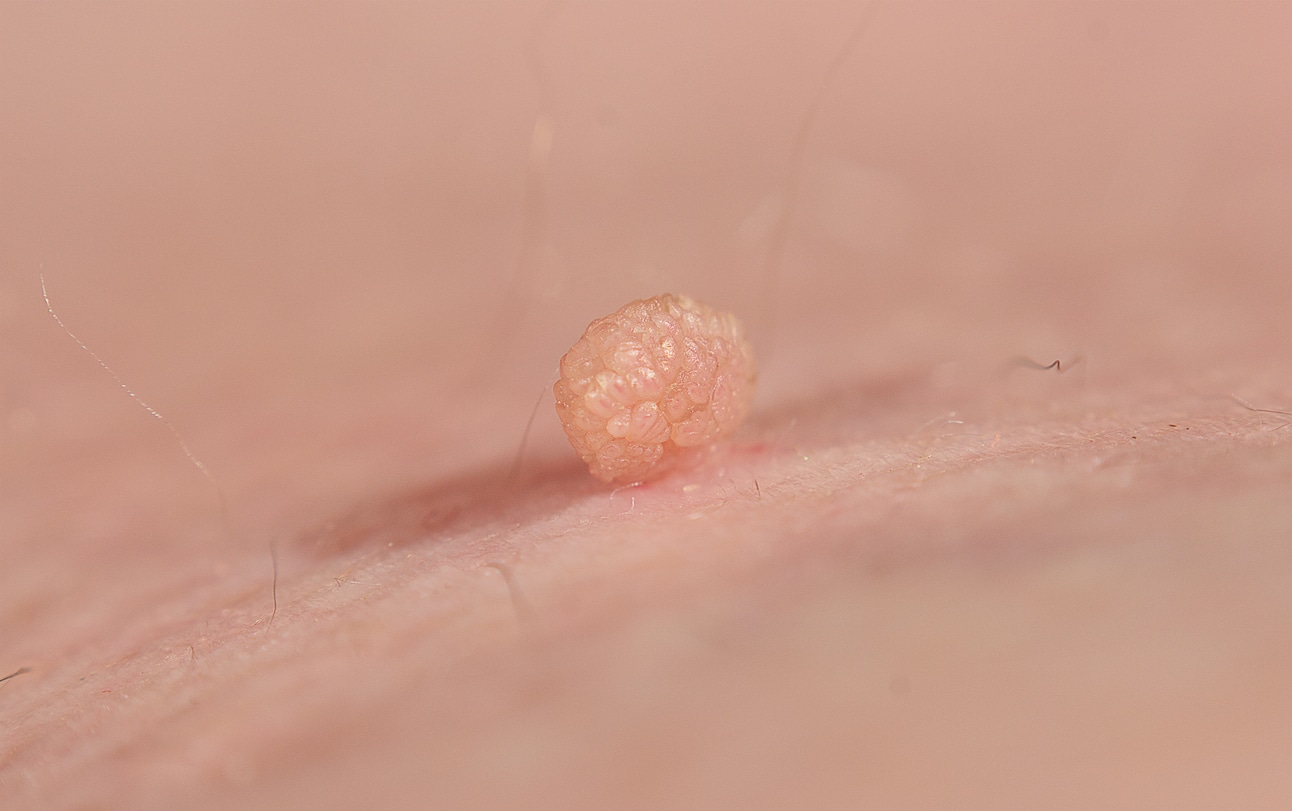What Are Skin Tags?
September 26, 2023 by VitalSkin Dermatology

Skin tags, also known as acrochordons, are common benign skin growths that affect millions of people worldwide. These soft, flesh-colored protrusions may appear inconspicuous to some, but they can be a source of concern or discomfort for others. They are composed of collagen fibers, blood vessels, and a covering of skin. Skin tags come in various sizes, ranging from a few millimeters to several centimeters in length, and they can have a smooth or wrinkled appearance. These growths are generally painless and non-cancerous.
In this post, we will delve deeper into the world of skin tags, covering their causes, characteristics, potential complications, removal options, and even preventive measures to help you manage them effectively.
Common Causes of Skin Tags
While the exact cause of skin tags is not definitively known, several factors are thought to contribute to their development:
Friction: Skin tags tend to form in areas where skin rubs against itself or clothing. Common locations include the neck, underarms, groin and eyelids. The constant friction in these areas may stimulate the growth of skin tags over time.
Genetics: There is evidence to suggest that genetics play a role in skin tag formation. If your parents or other family members have them, you may be genetically predisposed to develop skin tags.
Hormonal Changes: Certain hormonal fluctuations, such as those occurring during pregnancy, may increase the likelihood of developing skin tags.
Obesity: Being overweight or obese can elevate the risk of skin tag formation. Excess skin folds in individuals with obesity provide an ideal environment for these growths to develop.
When to Seek Medical Attention
In most cases, skin tags are benign and don’t necessitate immediate medical intervention. However, there are situations where consultation with a dermatologist is advisable:
Pain or Discomfort: If a skin tag becomes painful, swollen, or irritated, it may require medical evaluation and possible removal to alleviate discomfort.
Bleeding: Skin tags can bleed if injured or irritated. If you notice excessive bleeding or recurrent bleeding, it’s essential to consult a healthcare professional.
Change in Appearance: While rare, if you observe a sudden change in the appearance of a skin tag, such as rapid growth, unusual color changes or irregular borders, it’s crucial to have it examined by a dermatologist to rule out other skin conditions, including skin cancer.
Removal Options
Although many individuals choose to leave skin tags untouched, there are situations where removal may be preferred, either for cosmetic reasons or to address discomfort. Dermatologists offer several safe and effective removal methods, including:
Cauterization: This method employs heat to burn off the skin tag, effectively removing it.
Cryotherapy: Liquid nitrogen is applied to freeze the skin tag, causing it to wither and fall off over time.
Excision: Under local anesthesia, a dermatologist uses surgical scissors or a scalpel to cut the skin tag off.
Ligation: A small string or suture is tied around the base of the skin tag, cutting off its blood supply, which causes it to shrink and eventually drop off.
Prevention and Home Remedies
While it’s not always possible to prevent skin tags, some strategies may help reduce your risk:
Maintain a Healthy Weight: Maintaining a healthy weight can minimize skin folds and friction, reducing the likelihood of skin tag development.
Practice Good Hygiene: Keeping the skin clean and dry in areas prone to skin tags can help prevent irritation.
Avoid Tight Clothing: Loose-fitting clothing can reduce friction and irritation on the skin.
Use Natural Oils: Some individuals have reported success with natural oils like tea tree oil or apple cider vinegar in reducing skin tags, though results may vary.
VitalSkin Dermatology’s Guide to Skin Tags: Identification, Removal, and Prevention
Skin tags are common and generally harmless skin growths. While they may not always require medical attention, understanding their causes, potential complications, and removal options is essential for informed decision-making. Whether you choose to leave them or opt for removal, consulting a dermatologist is advisable for personalized guidance and care. Additionally, adopting preventive measures can help minimize your risk of developing skin tags in the first place.
For expert guidance on skin tag management and other dermatological concerns, trust the professionals at VitalSkin Dermatology. Contact us today for personalized care and solutions to keep your skin healthy and radiant.

